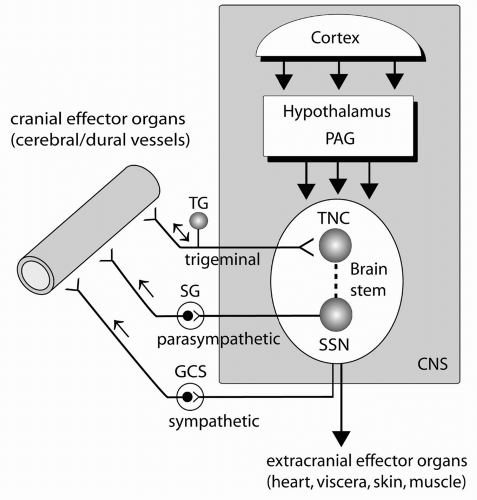Author |
Methods |
Point of Time |
ANS Involvement in Migraineurs |
|---|
Downey and Frewin (61) |
Resting hand BF + cold stimulus (VOP) |
F |
Resting level of hand BF suggests sympathetic hypofunction, but normal reaction to cold stimulus |
Steiner et al. (62) |
CR |
F |
Sympathetic hypofunction |
Gotoh et al. (63) |
VM, BP, TT, Aschner test |
F |
Sympathetic hypofunction with denervation supersensitivity; mild parasympathetic hyperfunction in Aschner test |
Drummond (64) |
amplitude of pulsation of the STA, facial temperature, BP, HR, RR |
F |
Sympathetic hyperfunction |
Cortelli (65) |
TT |
FvA |
Impairment of SNS during migraine attack |
Havanka-Kanniainen et al. (15) |
HRV, TT, IWT |
F |
Mild parasympathetic hypofunction and sympathetic hypofunction |
Havanka-Kanniainen et al. (67) |
HRV (DBT, VM, TT) |
F |
Intact ANS in young migraine patients |
Havanka-Kanniainen (66) |
CR |
FvA |
Sympathetic hypofunction during attack |
Cortelli et al. (68) |
TT, HRV (DBT, VM) |
FvA |
Normal sympathetic function |
Havanka-Kanniainen et al. (69) |
PRR (DBT, VM, postural changes); IWT |
F |
Parasympathetic (PRR with deep breathing) and sympathetic hypofunction (VM, postural changes) |
Jensen (70) |
TSBF; TT |
FvA |
No vasomotor disturbance; normal ANS function under orthostatic condition |
Kuritzky (71) |
Spectral analysis of HRV |
F |
Imbalance in autonomic control |
Havanka-Kanniainen et al. (72) |
PRR (DBT, VM, orthostatic tests with TT); IWT |
F |
Mild parasympathetic hypofunction and sympathetic hypofunction; more severe disturbance in patients with frequent attacks |
Boiardi et al. (73) |
DBT, lying to standing test, postural hypotension test, sustained handgrip, HRV to VM |
F |
Impairment of sympathetic CR regulation in common migraine |
Gomi et al. (42) |
SSR |
F |
Sympathetic hypofunction |
Mikamo et al. (74) |
Orthostatic test, IWT, HRV |
F |
Sympathetic hypofunction |
Boccuni et al. (75) |
TT |
F |
Normal BP and HR |
Cortelli et al. (76) |
HR, BP, cold face test, IWT, HRV (VM, DBT; NA infusion) |
F |
Normal cardiac parasympathetic function, mild nonspecific sympathetic hyperactivity |
Martin et al. (77) |
HRV (DBT, Ewing test) |
F |
Sympathetic hypofunction |
Pogacnik et al. (78) |
VM, DBT, IWT, HRV, orthostatic test |
F |
Sympathetic hypofunction |
Pierangeli et al. (79) |
Power spectral analysis of HR, TT, VM |
F |
Normal function of ANS |
Evers et al. (21) |
SSR |
F |
SSR latencies are increased, amplitudes normal; authors suggest sympathetic hypofunction |
Shechter et al. (80) |
BP, VM, HRV, CR |
F |
No explicit results, rather sympathetic hyperfunction |
Atasoy et al. (24) |
SSR |
F |
SSR latencies are longer only in patients with psychiatric comorbidity, amplitudes normal |
The table refers to selected studies on cardiovascular reactivity in migraineurs indicating the diversity of results; it does not show every study performed. |
Abbreviations: A, examination during an attack; ANS, autonomic nervous system; BF, blood flow; BP, blood pressure; CR, cardiovascular reflexes; DBT, deep breathing test; F, examination during headache-free interval; FvA, examination during attack versus headache-free interval; HR, heart rate; HRV, heart rate variability; IWT, isometric work test; NA, noradrenaline; PRR, pulse rate reaction; RR, respiration rate; SSR, sympathetic skin response; STA, superficial temporal artery; TSBF, subcutaneous blood flow in the temporal region; TT, tilt test; VOP, venous occlusion plethysmography; VM, Valsalva maneuver. |
|










